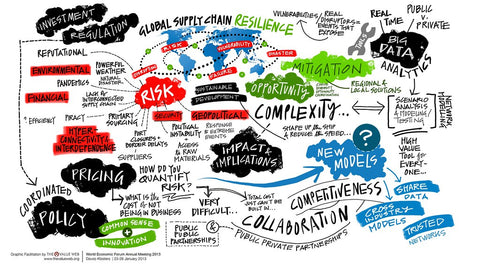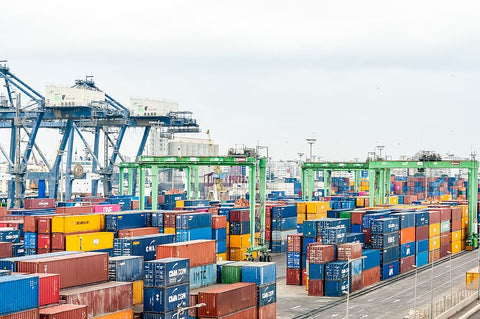How has COVID affected the US shipping industry?
Posted by Adrián Fernández on
‘Tis the holiday season, but it may not be so joyful for both suppliers and consumers. Imagine tracking your shipment for months, only to realize it won’t be here in time for the holidays. This year has been nothing short of a disaster at the ports in the US due to major backlogs.
At the beginning of the pandemic, the shipping industry slowed to a crawl. However, as people began to spend more time at home during lockdowns, online shopping started doing sprints, and the race to the ports turned into a traffic nightmare.
The pandemic has exposed deficiencies within the logistics of the shipping industry, including a shortage of manpower and facilities.
What exactly caused the backlogs?

Simply put, an imbalance in supply and demand. A supply chain is a system of organizations, people, activities, information, and resources involved in supplying a product or service to a consumer. Demand is the quantity of goods that consumers are willing and able to purchase at various prices during a given period of time.
When the demand for a product far outweighs the supply, it triggers a domino effect on the entire supply chain.
Due to the fact that many factories, both locally and internationally, were closed or operating on skeleton staff, demand increased so much so that factories were unable to supply quickly enough.
Further up the supply chain are the shipping companies and ports.
This is where the majority of the backlogs are currently happening. The “traffic jam” is causing containers to be stuck on ships waiting to be offloaded.
Prior to the pandemic, the average wait time for goods to clear the ports was roughly two days. This delay has now increased to up to nine days.
Consequences
The Ports

Ships are out at sea in limbo, sometimes for weeks, waiting to dock but are unable to move. The ports have little to no space to hold new full containers. Many are still sitting on the docks to be offloaded and empty containers are still being held on chassis on the port, waiting for trucks to collect them. This has also caused a chassis shortage.
Retailers
As a result of the bottleneck, retailers are suffering a loss due to empty warehouses. Unfulfilled orders are out for some months for some stores, and with the holiday season fast approaching, the delays only seem more grim. Some of the shipping companies have also inflated their costs by thousands of dollars for the containers and storage. A container which used to cost $2,000 is now costing up to $25,000.
The consumers
Unfortunately, this will evidently blow back on consumers. Many companies, in order to offset higher costs, are hiking up the prices of goods. Consumers will then be left to pick up the slack and dig deeper in their pockets for the products they want.
Also, customers may end up waiting much longer than usual for their products as stores battle empty warehouses and ships wade in the waters.
Resolution
Smaller ports have begun to open their docks to accommodate some of the load and help alleviate the pressure on larger ports. Ports have also agreed to work around the clock, but since warehouses aren’t open 24/7 this poses another issue.
Conclusion
The pandemic has done a number on the shipping industry. The supply chain is - for lack of a better expression - in shambles. Consumers should prepare for considerable inflation in the coming months, or even years.
Contact us for your shrink wraps, stretch wraps and additional shipping supplies.

